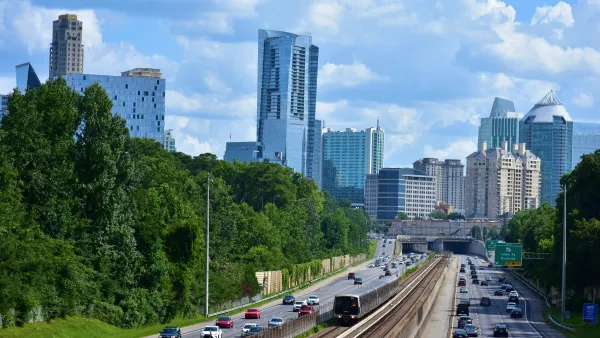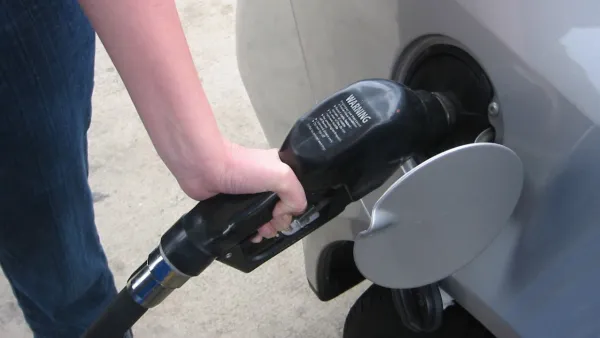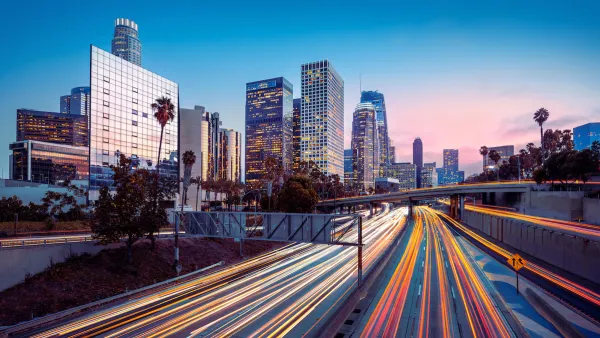Would raising the gas tax to $1 and establishing a 'gasoline price floor' provide market stability for auto dealers? Some dealers, including the nation's largest, say 'yes'. Economists agree. Politically impossible? Read on.
National Journal's energy and environment correspondent, Coral Davenport goes to "the heart of the Southern California car market" to speak with an auto dealer who supports a a more than 500-percent increase in the gas tax to $1 because it would bring "market certainty".
The fluctuating price of gasoline creates market uncertainty for dealers, meaning sales of SUVs and efficient compacts vary with the price of gas, according to the Morovia dealer.
"A growing number of car dealers advocate the same solution to the problem: raise the gasoline tax, enough to create a consistent, predictable demand for fuel-efficient cars and to force automakers to build gas-sippers that people want and can afford. One way to do this, say automakers, would be to create a new gasoline price floor -a point below which prices won't fall."
Not a new concept, Washington Post conservative columnist Charles Krauthammer wrote about it in 2004, as did University of CA energy expert Severin Borenstein (Planetizen, 2008).
Michael Jackson, chief executive officer of AutoNation, the world's biggest auto retailer, is an outspoken gas tax advocate. In April, he told CNBC: "At the end of the day, you would need a gas tax, increased over decades, to keep the consumer focused on conservation."
"Two of our biggest problems, as an economy, is our dependence on oil and our contribution to climate change. A gas tax gets at all of these neatly, elegantly, and efficiently," says James Sallee, an expert on energy and tax policy at the University of Chicago.
"We know clearly and convincingly that new-car purchases are responsive to price fluctuations. It sends a market signal, instead of having government regulations pick what we do", says Sallee.
"That idea, of course, is tantamount to jumping on a political hand grenade, which is why the politicians these economists advise haven't tried to do it.
The solution there could be a tax trade-off: raise the tax on gasoline but make an equivalent cut on payroll or income taxes."
Thanks to MTC-ABAG Library
FULL STORY: $1 Gas Tax? One Auto Dealer Says, ‘Yes, Please’

National Parks Layoffs Will Cause Communities to Lose Billions
Thousands of essential park workers were laid off this week, just before the busy spring break season.

Retro-silient?: America’s First “Eco-burb,” The Woodlands Turns 50
A master-planned community north of Houston offers lessons on green infrastructure and resilient design, but falls short of its founder’s lofty affordability and walkability goals.

Delivering for America Plan Will Downgrade Mail Service in at Least 49.5 Percent of Zip Codes
Republican and Democrat lawmakers criticize the plan for its disproportionate negative impact on rural communities.

Test News Post 1
This is a summary

Test News Headline 46
Test for the image on the front page.

Balancing Bombs and Butterflies: How the National Guard Protects a Rare Species
The National Guard at Fort Indiantown Gap uses GIS technology and land management strategies to balance military training with conservation efforts, ensuring the survival of the rare eastern regal fritillary butterfly.
Urban Design for Planners 1: Software Tools
This six-course series explores essential urban design concepts using open source software and equips planners with the tools they need to participate fully in the urban design process.
Planning for Universal Design
Learn the tools for implementing Universal Design in planning regulations.
EMC Planning Group, Inc.
Planetizen
Planetizen
Mpact (formerly Rail~Volution)
Great Falls Development Authority, Inc.
HUDs Office of Policy Development and Research
NYU Wagner Graduate School of Public Service





























